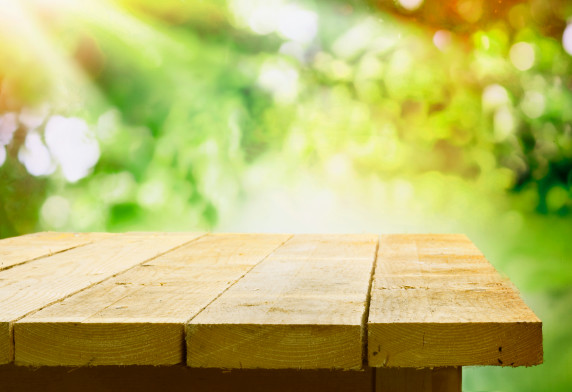Choosing the Right Wood for Outdoor Projects

Natural wood is a great choice for adding warmth and texture to your garden. A lot of timber is chemically treated to prevent rot, but some woods have superior natural rot resistance and can be used outdoors without chemical treatment.
Sunlight exposure, moisture, insects and fungi are main factors that contribute to wood rot. It is most important to use rot-resistant wood when it comes in direct contact with the ground; in a garden bed or trellis, for example.
Ground contact allows moisture to penetrate the wood, expanding and splitting it’s pores and opening it up to mould and fungus. Plants and vines that grow over the wood also accelerate any rot as moisture can build-up around them.
Planning an outdoor project
When planning an outdoor project consider how much weather and sunlight it will be exposed to, the wood’s natural resistance to decay, the best method of treating the finished product, and how much maintenance it will need.
In general, any wood will work for an outdoor project if it’s kept dry and regularly maintained However, some woods do have a higher resistance to decay than others.
Very resistant
- Cedar
- European Oak
- Idigbo
- Ipe
- Iroko
- Black walnut.
Moderately resistant
- Douglas Fir
- Larch
- Sapele
- Meranti
When using hardwoods outside, the wood will change in colour and the end product will need regular maintenance.
Weathering, Moisture, and Exposure to Sunlight
Even a highly resistant wood type will suffer under constant weathering. Left bare, hardwood will turn grey, take on surface cracking and can sometimes warp as they absorb moisture and dry out repeatedly.
Sunlight will drain colour and grain features of hardwood if they are not maintained regularly, so a UV blocking finish or topcoat will protect it.
Resistance to decay
You can improve your odds against fungus by using a hardwood that has a high resistance to decay; such as a dense or oily wood that soaks in the water much slower than other woods. Keeping your project out of contact with the ground will also help it to resist the effects of dampness and decay.
Exterior Finishes for Hardwoods
Direct sun and exposure to water are hard on wood. A good finish for an exterior project will have UV protection and water repellants.
For projects like decks, many Far Eastern species like Balau can be used bare. This is simply a choice made by the end-user who either prefers the grey weathered look (or doesn’t mind it) and accepts this as the most maintenance-free method of a wood with high resistance to decay.
These woods will do well outside without chemical protection for years to come, assuming that they don’t get saturated with water and are not in direct contact with the ground.
Otherwise, to have a hardwood keep its colour (as much as possible) and grain characteristics, you’ll need to apply an exterior grade finish and then maintain that finish.
Maintenance can be as frequent as three months depending on the severity of the project’s exposure to the elements and the quality of the finish. A good finish, applied correctly, on an exterior project may not need any additional care for up to two years.

